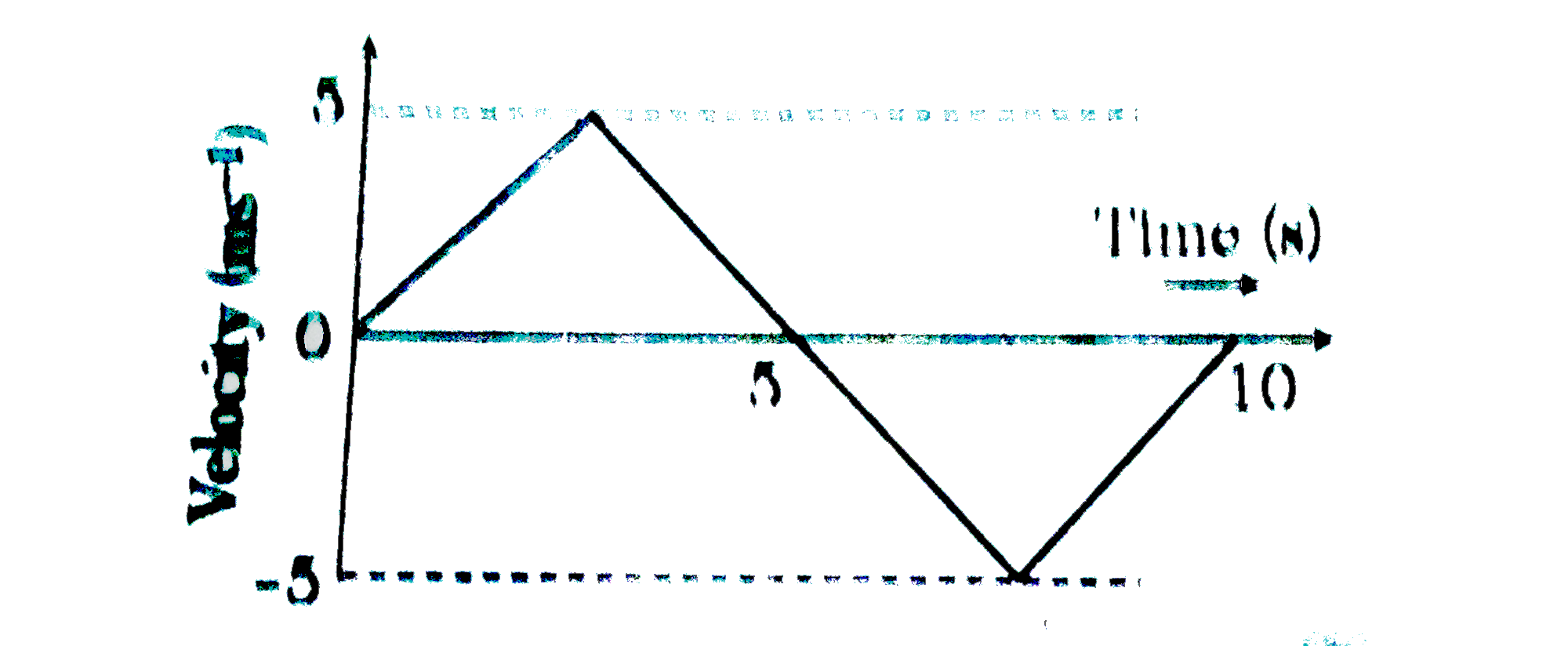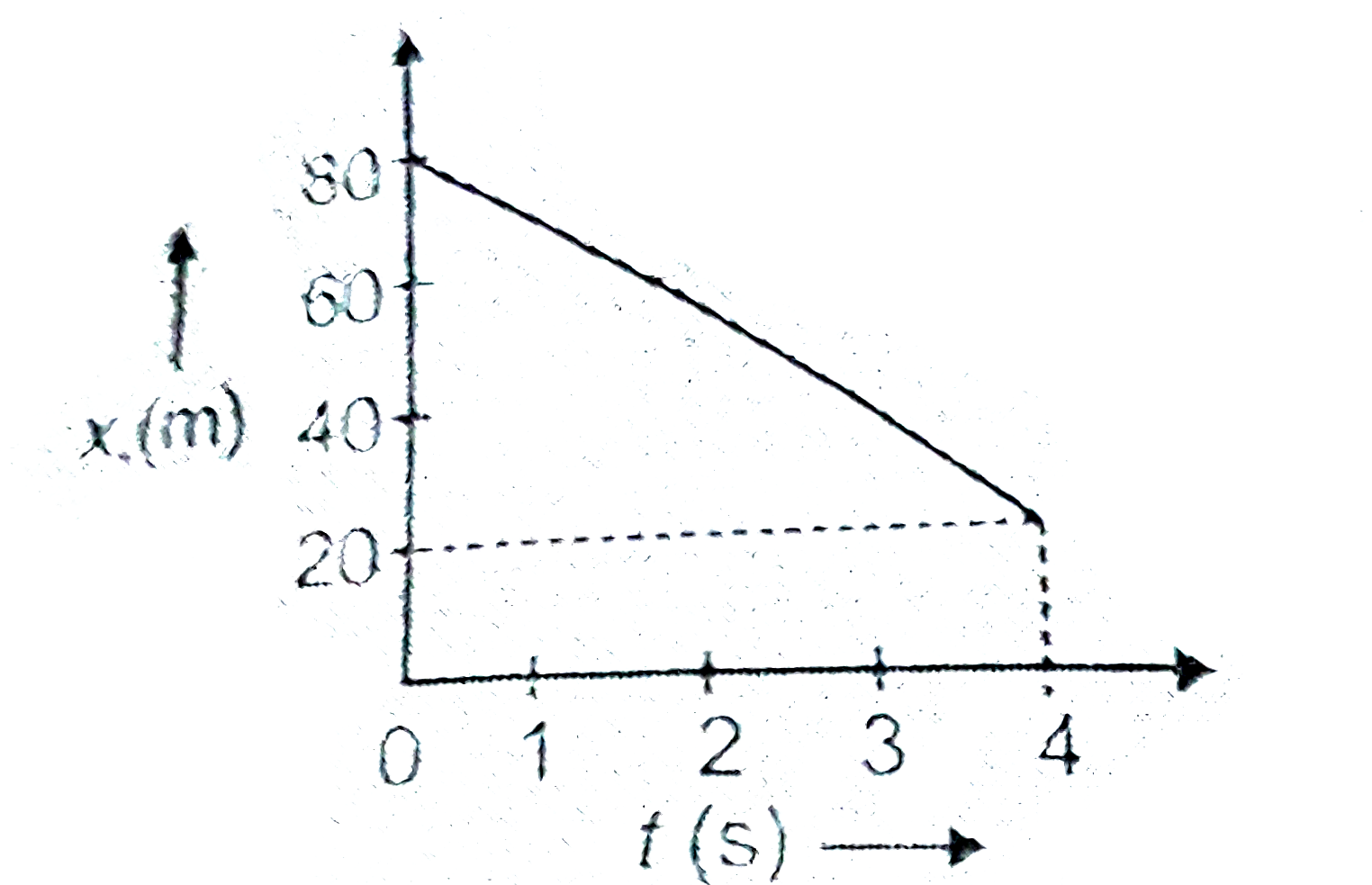The relative velocity of two objects A and B is 10 m/s. If the velocity of object A is 40 m/s then the velocity with which B is moving is (assume both objects are moving in same direction)
10 m/s
40 m/s
30 m/s
15 m/s
The correct Answer is:C
To solve the problem of finding the velocity of object B given the relative velocity between objects A and B, we can follow these steps:
1. Understand the Concept of Relative Velocity:
- The relative velocity of object A with respect to object B (denoted as VAB) is defined as the velocity of A minus the velocity of B when both objects are moving in the same direction.
- Mathematically, this can be expressed as:
VAB=VA−VB
2. Identify Given Values:
- From the problem, we know:
- The relative velocity VAB=10m/s
- The velocity of object A VA=40m/s
3. Set Up the Equation:
- Plugging the known values into the relative velocity equation:
10=40−VB
4. Solve for VB:
- Rearranging the equation to isolate VB:
VB=40−10
- Calculating the right side:
VB=30m/s
5. Conclusion:
- The velocity of object B is 30m/s.
Final Answer:
The velocity with which object B is moving is 30m/s.
---
- The relative velocity of object A with respect to object B (denoted as VAB) is defined as the velocity of A minus the velocity of B when both objects are moving in the same direction.
- Mathematically, this can be expressed as:
VAB=VA−VB
- From the problem, we know:
- The relative velocity VAB=10m/s
- The velocity of object A VA=40m/s
- Plugging the known values into the relative velocity equation:
10=40−VB
- Rearranging the equation to isolate VB:
VB=40−10
- Calculating the right side:
VB=30m/s
- The velocity of object B is 30m/s.
The velocity with which object B is moving is 30m/s.
Topper's Solved these Questions
- MOTION IN STRAIGHT LINEBOOK - AAKASH INSTITUTE ENGLISHCHAPTER - MOTION IN STRAIGHT LINEEXERCISE - Assignment (SECTION - B)
19 Videos
- MOTION IN STRAIGHT LINEBOOK - AAKASH INSTITUTE ENGLISHCHAPTER - MOTION IN STRAIGHT LINEEXERCISE - Assignment (SECTION - C)
7 Videos
- MOTION IN STRAIGHT LINEBOOK - AAKASH INSTITUTE ENGLISHCHAPTER - MOTION IN STRAIGHT LINEEXERCISE - Try Yourself
40 Videos
- MOTION IN A STRAIGHT LINEBOOK - AAKASH INSTITUTE ENGLISHCHAPTER - MOTION IN A STRAIGHT LINEEXERCISE - ASSIGNMENT (SECTION - D)
15 Videos
- MOVING CHARGE AND MAGNESIUMBOOK - AAKASH INSTITUTE ENGLISHCHAPTER - MOVING CHARGE AND MAGNESIUMEXERCISE - SECTION D
16 Videos
Similar Questions
Knowledge Check
m=M√1−v2c2
The equation above describes, according to Einstein's theory of relativity, how the mass of an object increase with velocity where m is the mass of moving object, M is the mass the mass the object when it is not moving, v is the velocity of the object relative to a stationary observer, and c is the speed of light. Which of the following expresses v in terms of m, M, and c?Ac√1−(Mm)2Bc√1+(Mm)2C√c2+(Mm)2D√c2+(Mm)2−1
The v-t plot of a moving object ios shown in the figure. The average velocity of the object during the first 10 s is

View SolutionThe relation between the acceleration and time for an object is given below. Calculate the velocity with which the object is moving at t = 1 s.
a=3t−4t2
View SolutionThe position-time (x-t) graph of an object in uniform motion is shown below. Calculate the velocity with which the object is moving.

View SolutionFind the magnitude of velocity of image of a point object O with respect to object, which is moving with velocity 2m/s in vertical direction as shown in the figure. The plane mirror that is inclined to horizontal at 45∘ is alos moving horizontally with velocity 2m/s towards left.

View SolutionAn object is moving though air at a speed v. If the area of the object normal to the direction of velocity is A and assuming elastic collision with air molecules, then the resistive force on the object is propotional to-(assume that molecules striking the object were initially at rest)
View SolutionState which of the following situations are possible and give an example for each of these :
(a) An body with a constant acceleration but with zero velocity.
(b) An object moving with an acceleration but with uniform speed
(c) An object moving in a certain direction with an acceleration in the perpendicular direction.
View SolutionIf the displacement of an object during its motion is 100 m in a time interval of 20 s, then calculate the average velocity of the object with which it was moving through out his journey.
View Solution